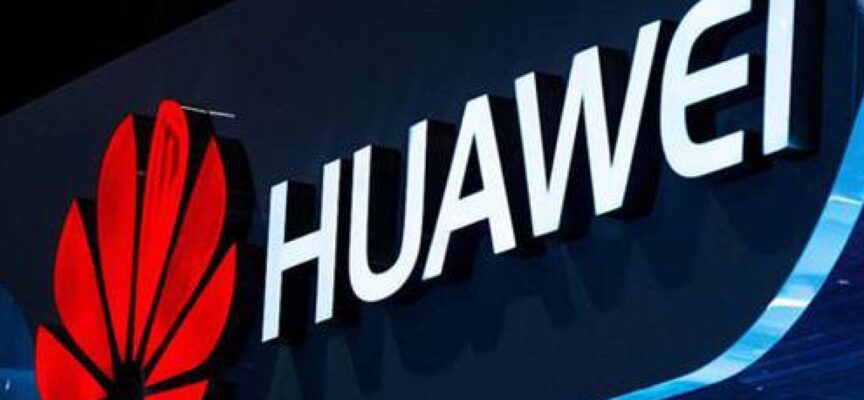Huawei is a Chinese-origin technology giant and one of the world’s largest telecom equipment suppliers headquartered in Shenzhen, China. Its total revenue as of 2018 was more than $105 billion.
In July 2019, the company unveiled its plan to invest $170 million in Pakistan apart from establishing a “regional headquarters” and upgrading its existing technical support centre. Mark Xueman, Vice President of Huawei Group, went a step ahead and termed Pakistan a “strategic market” for the company. Soon after, the local blogosphere was abuzz with the development, publishing content which portrayed Pakistan as the ‘South Asian hub’ of Huawei operations.
While increased investments in Pakistan’s timid ICT sector should be viewed in positive light, there are apprehensions among some watchful elements that the lust for foreign investment may be encouraging blindness toward certain long-term national security interests; key among these is the growing list of countries echoing concern that Huawei’s massive infrastructure is (allegedly) exploited by Chinese intelligence agencies for a variety of purposes including industrial espionagee and digital subversion. Nothing conclusive has been technically established to legitimise these claims, leaving enough space to give Huawei the benefit of the doubt. However, these reports cannot be dismissed altogether either.
It started with Australia, Canada, the US, the UK and now, even India. A recent media report, apparently leaked by an insider, revealed that officials from Australian Signals Directorate (ASD) during a visit to India advised New Delhi to “ban high-risk vendors“, an indirect but implied reference to Huawei. This convergence of claims amongst Australian, American and Canadian officials is not surprising; members of the ‘Five Eyes‘ have been so wary of Huawei’s growing commercial expansion that they are even maintaing a surveillance/ sabotage campaign against the company since 2007 led by the US National Security Agency (NSA).
India’s concerns merit attention. It was the first South Asian country where Huawei setup its R&D Centre in Bangalore (1999). A number of controversies have surfaced since then such as accusations of undue influence by Chinese authorities on state telecom staffers and restrictions on Indians within certain areas of the Bangalore complex. IB and R&AW have been maintaining constant vigilance of Huawei teams whenever they visit India.
Analysts will proffer that India’s concerns stem from skepticism toward anything Chinese but the gravity of claims against Huawei cannot dilute genuine reasons to question the functional process of its overseas (read: outside the Chinese mainland) operations and spate of technical vulnerabilities.
The past association of Huawei’s founder Ren Zhengfei with People’s Liberation Army (PLA) engineering corps and subsequently with Communist Party of China (CPC) is an open secret. He claims, however, that his personal business ethos would much rather prefer shutting down the company than cave in to certain requests by the Chinese government. Can, or rather should, these words be taken at face value?
Article 7 of China’s National Intelligence Law (2017) binds citizens within and outside the Chinese mainland to assist in “national intelligence work“. It is rightfully believed that the vague obligations and conditionalities defined in the law compel even large organisations like Huawei to support the interests of spy agencies when deemed necessary:
Wang Congwei, a partner at Beijing Jingshi law firm, said: “[Huawei] cannot refuse, the law stipulates that companies have an obligation to co-operate for national security and investigation needs. National security laws, the anti-terrorism law and other laws all require companies to assist the judiciary.”
Apart from the concerns of hidden backdoors and surveillance, there is also the issue of market monopoly. Huawei already enjoys greater leverage in Pakistan courtesy of the China-Pakistan Economic Corridor (CPEC). Recently, ChinaMobile Pakistan (CMPak), also known as Zong, carried out a successful trial of 5G in Pakistan and shared its ambition to setup its infrastructure across the country in partnership with Huawei.
This increasing privilege for Chinese mega investors and congolemarates has demoted prospects for a healthy market competition by European and other market stakeholders; it would not be wrong to state that little to no competition by the latter segment has only added to the growing influence of Huawei’s leadership to steer the course of the country’s ICT future as per its own long-term ambitions.
Do these ambitions comply fully with Pakistan’s long-term interests? As far as research reveals, several noteworthy private sector influentials along with military veterans with firsthand experience in nationwide telecom planning have already been pocketed by Huawei. Pakistan’s ICT regulatory framework is heterogeneous with overlapping roles and multi-stakeholder involvement without a clear cut policy direction (despite having a Telecom Policy).
There is also the non-availability of adequate resources and qualified manpower to ensure that licenses of Original Equipment Manufacturers (OEMs) including telecom suppliers can be validated against nationally-defined standards and protocols. To what extent will the state be able to assure Communication Security (COMSEC)?
Pakistan’s national stakeholders have a tight rope to walk on if they do not implement a proper system of checks and balances in place.
Giving one particular country the masterkey to the entire national communications apparatus, even if it is an all-weather ally, is not a wise decision.








No comments!
There are no comments yet, but you can be first to comment this article.